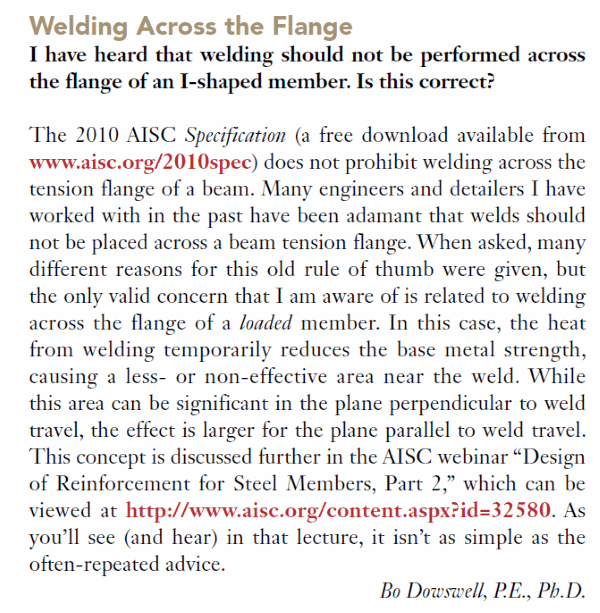JAE
Structural
- Jun 27, 2000
- 15,576
With a steel beam we've always been very careful about trying to avoid welding across a beam flange while it is under stress and carrying load.
The theory is that if you weld across the flange, you introduce excessive heat that can possibly affect the entire flange and possibly cause collapse.
The question we have is:
1. Is there a specification or AWS procedure out there that controls the weld process such that this doesn't happen?
2. Is the procedure such that it depends on the weld size, flange thickness, weld process, etc.?
3. Does it matter if the flange is in compression vs. tension in terms of the danger?
Check out Eng-Tips Forum's Policies here:
faq731-376
The theory is that if you weld across the flange, you introduce excessive heat that can possibly affect the entire flange and possibly cause collapse.
The question we have is:
1. Is there a specification or AWS procedure out there that controls the weld process such that this doesn't happen?
2. Is the procedure such that it depends on the weld size, flange thickness, weld process, etc.?
3. Does it matter if the flange is in compression vs. tension in terms of the danger?
Check out Eng-Tips Forum's Policies here:
faq731-376


![[idea] [idea] [idea]](/data/assets/smilies/idea.gif)
![[r2d2] [r2d2] [r2d2]](/data/assets/smilies/r2d2.gif)